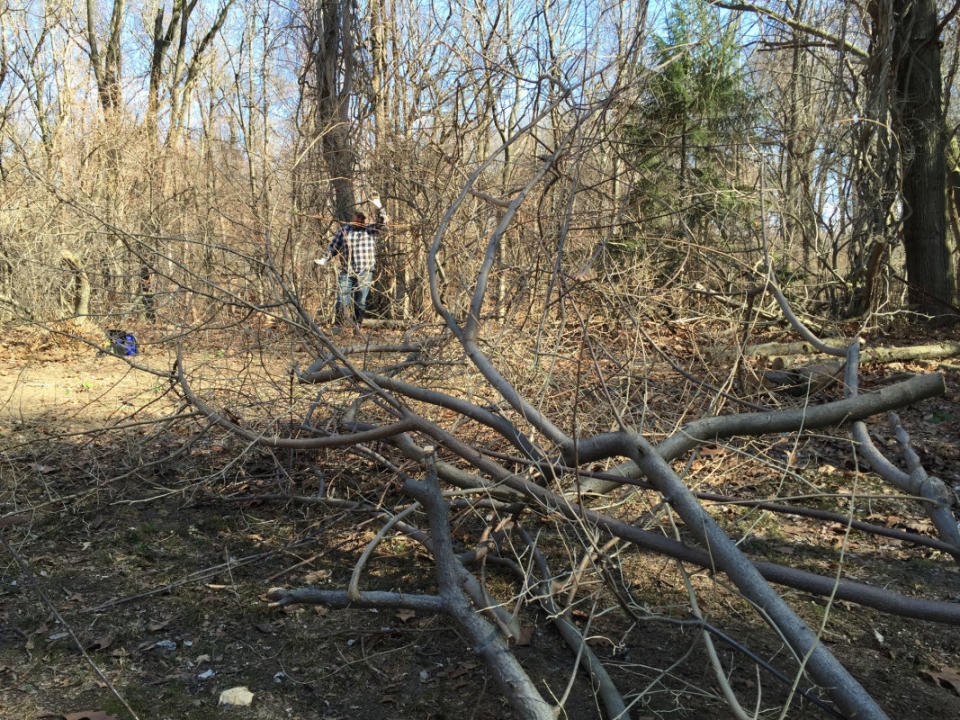10 Lawn Care Chores You Can Do Now That It’s Spring
Spring is arguably the best time to focus on having a healthy lawn and landscape. Whether you’re a seasoned gardener or just looking to get some fresh air, consider your spring lawn care plan and make it a goal to prioritize garden, landscape, and lawn maintenance. A warm weekend is the ideal time to get started, but don't worry if it doesn't all get done in one day. Think of it as a celebration of the season.
1. Rake the Leaves and Winter Debris
Gather leaves and any old grass clippings into piles using a flexible leaf rake or leaf blower.
Rake up any twigs, branches, or other debris to prevent tripping hazards.
Use a special dethatching rake to remove dead grass.
Consider mulching leaves with a mulching mower to add nutrients back to the soil. If you can't, disposing them in compost bins is the next best option. If your town has a leaf pickup, check the schedule. If there's a drop-off site, place the leaves in paper bags and transport them for free disposal. Don't put the leaves in plastic bags!
2. Aerate the Soil
Correct soil compaction and use a core aerator or spike aerator to create holes in the soil.
Work in a grid pattern across the lawn for even coverage. Pay special attention to areas that experience poor soil drainage.
If you're looking to nab a soil sample, a core of compacted soil will be perfect for a soil test kit!
Water the lawn thoroughly after aerating to encourage deeper penetration.
Consider applying a slow-release fertilizer and, if your soil temperature is above 50 degrees and freezing temperatures have passed, overseed areas with new grass seed to promote strong growth. (If there are still threats of cold temperatures, wait until late spring to apply grass seed.)
Related: How to Grow Grass in a Shaded, Mossy Yard
3. Fertilize
Choose a lawn fertilizer specifically formulated for your grass type and local soil conditions. Consider natural fertilizers or organic spring fertilizers, especially if you expect fertilizer runoff into garden beds.
You can spread it by hand, but a fertilizer spreader is faster. Follow the package instructions for the correct fertilizer application rate.
Water the lawn lightly after any seasonal fertilizer application to help activate the fertilizer and prevent burning the healthy grass blades.
Note: Avoid fertilizing during periods of drought or excessive heat. You can usually avoid this if you're doing it early in the spring, but be mindful to prevent stress on the grass.
4. Trim the Edges
Use a string trimmer or lawn edger to trim along sidewalks, driveways, and flower beds. Hold the trimmer parallel to the ground for a consistent cutting height.
Use a spade to carefully edge around trees, shrubs, and other landscaping features to avoid damage.
Sweep or blow away any clippings.
Related: These 3 Bad Things Can Happen When You Keep Leaves on Your Roof
5. Mulch
Spread a layer of organic mulch, such as wood chips or shredded bark, around the base of trees and plants.
Maintain a mulch depth of 2-4 inches, taking care not to pile mulch against tree trunks or plant stems.
6. Clear Debris from Gutters
Use a ladder and gloves to safely access the gutters.
Remove leaves, twigs, and other debris by hand or with a scoop.
Flush the gutters with a hose to ensure proper drainage and check for damage that may have occurred during the winter months.
Related: How to Check for Gutter Damage After the Winter
7. Trim Overhanging Branches
Before the leaves have fully leafed out, inspect the trees. Do you spot any dead or broken branches that overhang your home or patio? Use pruning shears or a pruning saw to trim branches to a safe length to promote healthy growth.
Contact a professional arborist for large or difficult-to-reach branches.
Related: Winter is the Best Time For a Tree Evaluation—Assess For Damage and Disease Today
8. Clean Outdoor Furniture
Furniture left outdoors all winter gets dusty, dirty, and often covered with water spots from rain, ice, and snow. Use a mild soap and water solution to clean plastic, metal, or wicker furniture.
Scrub cushions and fabric surfaces with a soft brush or sponge.
Rinse everything thoroughly with a hose and allow to air dry completely.
Related: What’s the Best Way to Organize Your Outdoor Space?
9. Hook Up the Garden Hose and Check Irrigation Systems
Reattach your garden hose (if it was disconnected for the winter).
Inspect sprinkler heads on your irrigation system for damage or clogs.
Test each zone of the irrigation system to ensure that it still provides uniform coverage across your entire lawn.
Adjust sprinkler heads and set watering schedules, if necessary.
Need an upgrade? Consider a smart irrigation system for precise water management.
10. Prune Shrubs and Hedges
Use hand pruners or hedge shears to trim back overgrown branches and shape the plants.
Cut back dead or diseased branches to improve overall plant health.

Emily Fazio

